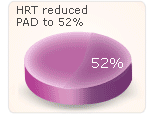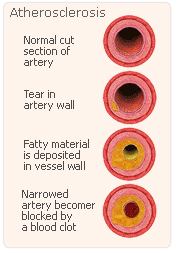
Peripheral arterial disease (PAD) is a growing health problem affecting elderly women in Western society. Various investigations have shown that patients with PAD, with or without reported intermittent claudication, are at greater risk of cardiovascular mortality than people without PAD. Hormone therapy (HRT) after menopause, which is believed to protect against coronary atherosclerosis, might also inhibit the development of PAD. Results from this study showed that using hormone therapy for 12 months or more reduced the risk of PAD by 52%. This investigation further analyzed the association between hormone therapy use after menopause and the presence of atherosclerosis in the peripheral arteries.
Findings from observational studies suggest that hormone therapy (HRT) following menopause reduces cardiovascular disease deaths among women postmenopause.
Results demonstrate that there is a reduced risk of atherosclerosis in the peripheral arteries of women undergoing at least 1 year of hormone therapy after menopause compared with nonusers. Yet, with studies involving the elderly there is always the chance of selection bias. In this study it was found that for women using hormone therapy after menopause for less than 12 months, there was no link with the presence of PAD, which reduces the probability of selection bias.

Only one large randomized placebo-controlled examination into the effects of hormone therapy after menopause has been carried out. Data showed that women with diagnosed cardiovascular disease demonstrated no positive effect of hormone therapy post-menopause on the inhibition of incident coronary heart disease after 4 years of follow-up. Furthermore, an increased risk of coronary heart disease events was found in the hormone therapy group in the first year of the trial, while risk lessened in successive years. Hence, data